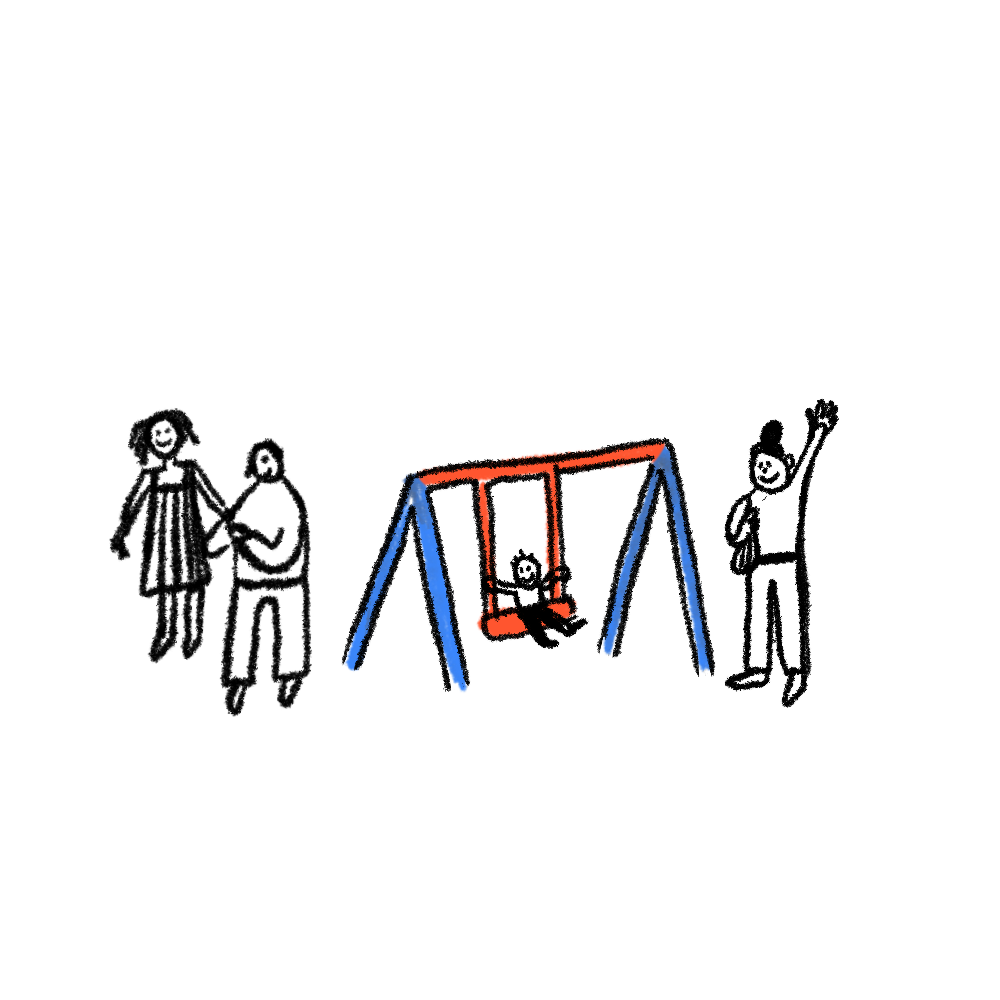
Case Studies
Public Space
We need to be able to take ownership of safe, outdoor, public spaces.
The maps produced by the children taking part in Journeys and the accompanying interviews show children interacting with and exploring public spaces in a variety of ways. 50% of the children referenced public spaces within their local communities in their maps, and the same proportion specifically reference parks, beaches, forests, or other outdoor spaces that are meaningful to them in their day-to-day lives. The maps show these children taking ownership of such spaces through their use of them, and through reproducing these spaces in their artwork. Safe access to such spaces therefore appears as a vital way for these children to participate in their communities and integrate with others.
Case study 1 (KT02): Sadia
Sadia loves sports and spending time with her friends and cousins. Her map shows a small image of her street in yellow, with the label ‘place of friendship’. In her interview, she expands on this:
““So when I first moved on my street, sometimes I’d go outside to play on my street. But then, when I came out one day, I saw all these other people there. And when I saw these other people, I thought, oh, why don’t I just go ask? And then, when I asked them, we got quite, everyone got along with each other quite well. Every weekend we go outside and then we always play with each other. Sometimes we go to each other’s houses. And I put that as a place of friendship because that’s where all my friendships started”. ”
Like many of the children involved in Journeys, Sadia had moved from to her current hometown from elsewhere, and describes the experience of moving to a new house on a new street, not knowing anyone. This is a core example of a child taking ownership of a public space and repurposing it for her own needs. Her residential street, built for access to properties and for cars and pedestrians to pass, is much more than that for her. Her street is somewhere that she takes the initiative to build a community around her when she was in a new place. She goes on to explain that the people she plays out with on her street also attend her mosque, indicating how forms of cultural belonging intersect with and are strengthened by access to public outdoor spaces. Safety is an important subtext: Sadia is able to take ownership of her street in this way, and socialise with others, because she is safe enough to do so.
Case study 2 (AN02): Daniel
Daniel likes reading, drawing, and learning about space. He had recently moved to the UK from Nigeria and his scroll shows images of home from both countries, with sustained attention to the importance of public space to his wellbeing and ability to connect with others. He describes being made to feel welcome at the local skate park, where he rides he BMX bike.
On the worksheet that he used to prepare for his map, Daniel describes his local park as “a place I call home”. In his interview, Daniel described the flowers, and then said:
“I just like staying there […] It’s just welcoming. Like, I feel good there. Like anytime I go there, it just makes me relax.”
Access to nature near his home, and specifically an outdoor space where he relax, seems essential for Daniel’s wellbeing, and this is somewhere he return to. The notion that such a space is ‘welcoming’ is crucial, and highlights the need for children to feel actively welcomed into shared public and outdoor spaces, rather than simply allowed or tolerated. Public spaces, such as the skate park, are clearly also where Daniel forms his relationships with other children outside his home, allowing him to integrate with others. He describes his local library as one such space, saying:
“ …a place I welcome others in the library because like, there’s a library next to my house so I welcome some of my friends there. ”
Being able to take his friends to the library, a safe place for him, makes him feel good. In Daniel’s descriptions of such spaces, there is a clear sense that he feels able to take ownership there, notably present in the library which he feels able to make his own by welcoming others. Notions of welcome, calm, and safety are crucial for Daniel’s use of all the public spaces he uses to participate in the life of his local community.






